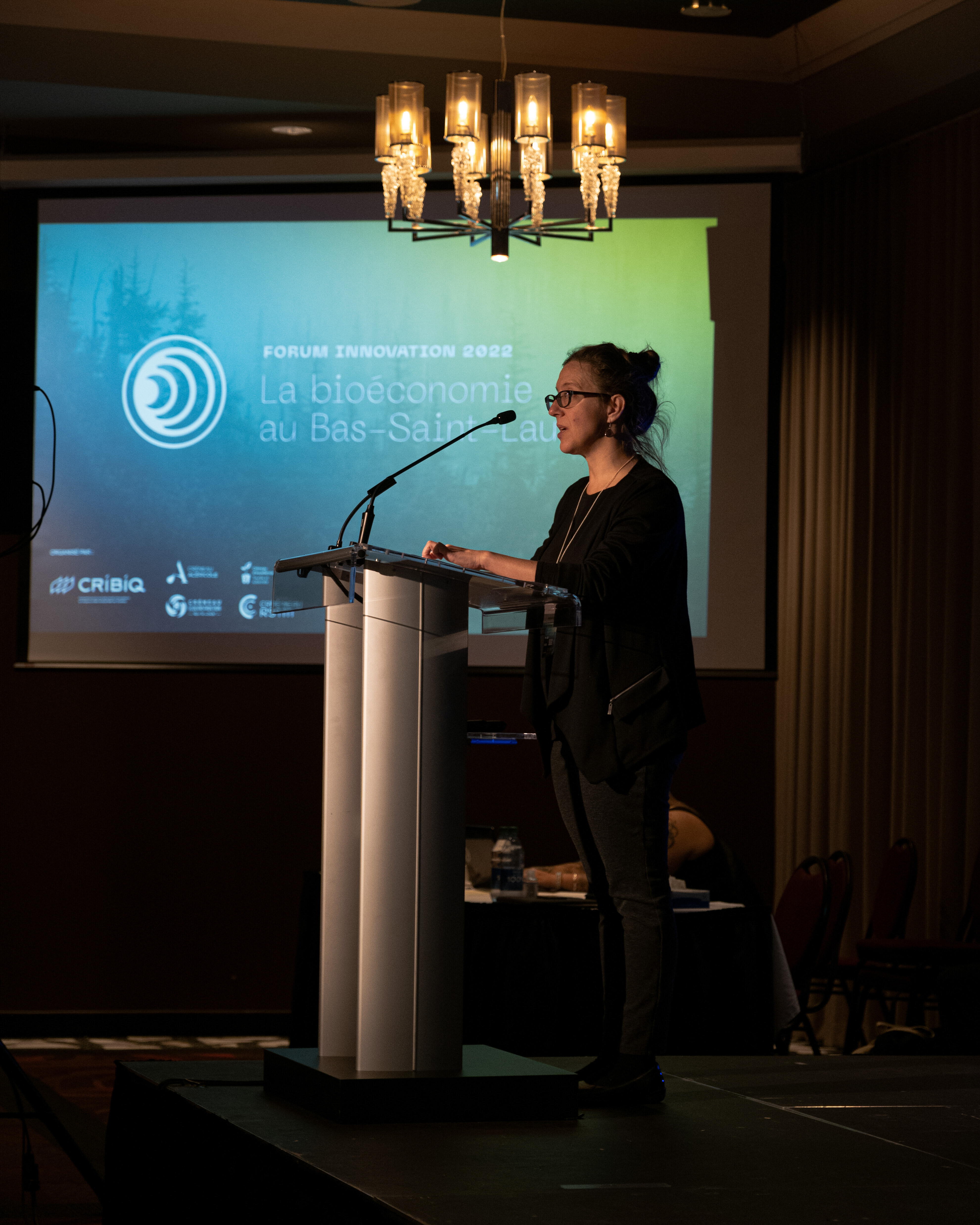Type a word to start your search

Type a word to start your search


Quebec City, November 16, 2022 – On October 19-20, 2022, in Rivière-du-Loup, was held the 1st edition of the Forum Innovation sur la Bioéconomie au Bas-Saint-Laurent (FIBEQ BSL), organized by the CRIBIQ in collaboration with the four (4) ACCORD niches of excellence in the Lower St. Lawrence: Acéricole (maple syrup), Écoconstruction (ecoconstruction), Ressources, Sciences et Technologies marines (marine resources, sciences and technologies) and Tourbe et substrats (peat and substrates). This very 1st regional edition of the provincial initiative FIBEQ (Forum Innovation sur la Bioéconomie au Québec) established by the CRIBIQ in 2019 brought together 150+ participants from the industrial, academic and economic development fields united by the desire to learn more about the innovations and hidden potential of bioresources in the Lower St. Lawrence region.
Based on three (3) pillars – the territory (St. Lawrence River, forests, peatlands), knowledge (concentration of R&D expertise related to the bioeconomy) and communities (culture of innovation and collaboration) – the Lower St. Lawrence bioeconomy is solidly established through five (5) promising sectors: maple syrup production, ecoconstruction, peat and substrates, marine biotechnology and bio-food. In 2018, it accounted for $1.1 billion in GDP, representing ≈ 5.2% of the GDP generated by the Quebec bioeconomy, and supported more than one in ten jobs in the region – that is, 10,200 jobs – representing ≈ 5.7% of the jobs generated by the Quebec bioeconomy. The region also has four (4) niches of excellence (listed above) with specific recognized competencies stemming from the ACCORD approach of the Ministry of Economy, Innovation and Energy (MEIE), all of which are closely linked to the Lower St. Lawrence bioeconomy.
During the two (2) days of discussions on the themes surrounding the Lower St. Lawrence regional bioeconomy, participants explored the various avenues offered by the established sectors of maple syrup production, horticulture, agriculture and forestry, which have a high potential for added value, as well as the opportunities offered by emerging sectors such as ecomaterials, local products (e.g.: the mycology sector) and marine resources and biotechnologies. The 1st edition of the FIBEQ BSL was also an opportunity to discover innovative industrial projects presented by passionate entrepreneurs with significant economic benefits for the region.
The Lower St. Lawrence is undeniably a strong supporter of the Quebec bioeconomy. In addition to existing niches, the region has seen the emergence of structuring initiatives over the past few years to support its economic development, including the Synergie Bas-Saint-Laurent project for the implementation of industrial synergies in the Lower St. Lawrence (circular economy), the creation of the Espaces régionaux d'accélération et de croissance to facilitate exchanges, dialogue and collaboration between all players in the regional entrepreneurial ecosystem, and the establishment of the Collectif régional de développement du Bas-Saint-Laurent thanks to the collaboration of the eight (8) regional MRCs.
These concerted efforts between all its stakeholders allow for the sharing of knowledge and expertise related to the various sectors of economic activity as well as to ensure excellence in innovation and the development of bioresources; promote the growth of businesses in both traditional and emerging sectors; and maintain the competitiveness of regional industries on the local and international scenes, all from a sustainable development perspective.
Finally, on the occasion of the 1st edition of the FIBEQ BSL, participants attended the unveiling of the study entitled: "Portrait of the bioeconomy in the Lower St. Lawrence – The symbiosis between territory, knowledge and communities". This study was conducted by the AGÉCO Group, mandated by the CRIBIQ in collaboration with the four (4) ACCORD niches in the Lower St. Lawrence region. It aimed to allow the region to better understand the bioresource ecosystem characterizing its territory and to guide the next phases of its (bio)economic development!